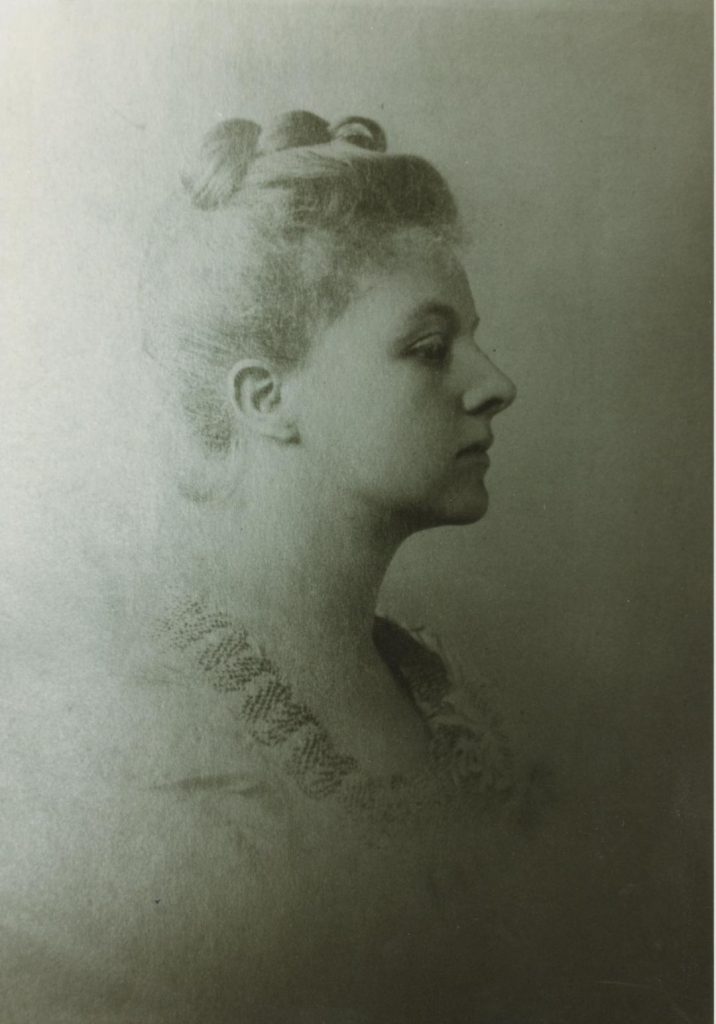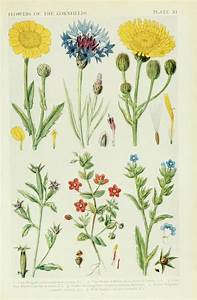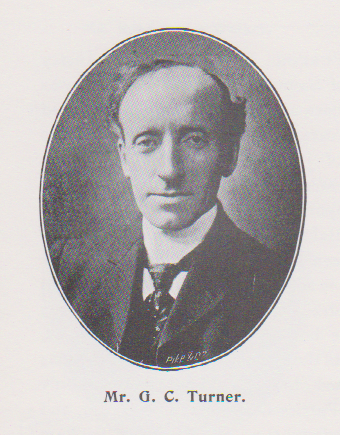Volunteer Caroline Wessel charts the early development of the University College botanical garden.
The idea a Botanical Garden for the proposed University College was first made public on 21 September 1920 when the Leicester Mail reflected that
It was a happy thought of Mrs Bernard Ellis that a Botanical Garden should be established in the University grounds. There has long been a most useful section of the Leicester Literary & Philosophical Society and the members of that body have promised to give full assistance in the work of preparing the garden. And in Mr A.R. Horwood of the Leicester Museum (contributor of “Observations of a Naturalist” in the Daily Post) the city has a gentleman with a wide knowledge needful for supervising and planning this work. The University botanical gardens ought not only to be of service to the students at the new College, but an object of interest to citizens generally, on such occasion as they are permitted to see it.
Leicester Mail, 21 Sept. 1920
A Botanical Garden Sub-Committee was to be formed to undertake its planning and establishment and the Garden would be funded by donations rather than by the College itself.
The following year, on February 4 1921, the Leicester Mail wrote that
Mr Turner [the Chairman] gave the report of the Botanical Garden Sub-Committee and produced a plan of the proposed layout of beds. Their funds were not great, only £20 having been allocated to the Botanical Department. He was sure however they would not languish and die for want of financial support. They were endeavouring to get an interesting collection of plants.
Leicester Mail, 4 Feb. 1921
However three months later on 9 May 1921 the Leicester Mail reported that
The preparation of the botanical specimen beds was in hand but could not be carried to completion till the Church Extension Board were able to remove the iron church to its new site. Plans for the development of a rock garden round the fish pond were being prepared with a view to submission to the council at an early date.
Leicester Mail, 9 May 1921
Despite this delay, there was encouraging support for the proposed Garden, as the Leicester Mail confirmed on 30 June 1921 that pupils of Granville School, a girls school located on Granville Road, Leicester, ‘would like to do something for the college and some of them come up regularly to weed the path. They had also made a gift toward the Botanical Gardens. From these reports it is clear that three key players had emerged to lead the project – Mrs Bernard Ellis, Mr A.R. Horwood and Mr Turner.

Mrs Bernard Ellis (née Isobel Evans)(1863-1936) served on the College Council from the outset. A tireless social worker and a lover of horticulture, she must also have had highly emotive feelings regarding the University as a War Memorial – for she and her husband had already given a generous gift of £1,000 in memory of their son, Oliver, killed as a pilot in WW1. Her other son, Colin had also fought, been seriously wounded, received the Military Cross – but survived. And her daughter, Christine, served in disaster zones throughout the war with a Pacifist Quaker organisation and in the 1920s was still out there with them, helping to rebuild destroyed communities in Bulgaria. Mrs Ellis’s extensive and heartfelt work for the Botanical Garden would surely have reflected her personal love for her family.
The actual construction and layout of the garden was under the guidance of Mr Arthur Reginald Horwood (1879-1937), the Honorary Secretary for scientific aspects on the Botanical Garden Sub-Committee. He was a most remarkable man who eventually rose to a senior position at Kew Gardens, as his obituary in the journal Nature explains:
By the death of Arthur Reginald Horwood on February 21, British botanists have lost a valued colleague and friend. Horwood was born at Leicester on May 29 1879 and was trained for the Indian Civil Service. He failed however to pass the medical examination and in 1902 he obtained a post at the Leicester Museum; he was afterwards appointed sub-curator and resigned this post in 1922. Two years later [i.e. 1924] he was appointed temporary botanist at the Royal Botanic Gardens, Kew, and remained at the Herbarium until his death. Horwood’s chief botanical work was concerned with fossil plants and the flora of Europe and the Near East. He published many papers and books and his popular works on the British flora obtained a wide circulation. The best-known of these were “Plant Life in the British Isles” (3 vols. 1914-16), and “The Outdoor Botanist” (1920). His most important publication was “The Flora of Leicester and Rutland” (1933), written in collaboration with the late Earl of Gainsborough. This contains a large amount of ecological information based on the extensive surveys that Horwood carried out with a band of helpers while at the Leicester Museum. At Kew, Horwood worked in the European and Oriental Department and was chiefly engaged in naming collections of plants from Persia, Iraq and other countries in the Near East. Horwood was always willing to give the benefit of his advice and help to his many botanical friends and correspondents’
Nature, vol. 139 (1937), p. 538.

The project moved forward slowly but by 1924 the College Annual Report gave encouraging news, saying, ‘During the past summer a scheme for a rock and water garden has been entered upon, under the auspices of the Botanical Garden Committee. The cost of the first section is estimated at £250, and to date £148 13s. 10d. has been paid or promised. The garden will be of very great assistance to students in the Botanical Department, and at the same time enhance the beauty of the College grounds’. And the report for 1925 rejoiced that ‘The year has also seen carried to completion the scheme for a Rock and Water Garden, entered on last year under the auspices of the Botanical Garden Sub-Committee. The total expenditure has been £478 18s., of which £337 1s. remains to be raised. It is the intention of the Botanical Garden Committee to embark at an early date upon an active canvass amongst those who are specially interested in floriculture and horticulture to clear off the deficiency, so that no part of the cost may fall upon the general funds of the College’.
ULA/FG1/3/14B
When completed in 1925, the Botanic Garden was extensive. It comprised a woodland garden, designed to display the typical flora of Charnwood Forest, sections devoted to medicinal plants, culinary herbs and dye plants, a rock and water garden, British order beds, an experimental area planted with various grasses on different soils, and a general planting of interesting specimens. The Charnwood Forest section of the new garden would have required slate and rocks of granite, as this area of the county has rocks 60 million years old from the Pre-Cambrian era. Typical plants would have included bilberry, foxglove, orchid and of course carpets of bluebells for which the area is still renowned.
The following year a general Gardens’ Sub-Committee was constituted to replace the former Botanical Garden Sub-Committee and its Chairman reported that ‘There has been a notable improvement in the appearance of the gardens during the year, and the addition of rose gardens, which were kindly stocked by Mr. Percy Gee, has enhanced their attractiveness in marked degree. Miss Peach is giving a sundial of her own workmanship to be placed in the rose garden. However the accounts showed that ‘Expenditure on Rock Garden (as previously detailed) was 474 18s with a further £2 added for that year, still giving a debit balance of £103.19s. In 1928 the debt had been reduced to £83.19s 6d and ‘Mr. G. C. Turner, J.P., has promised to give half the amount of the balance of the debt, £41 19s. 6d., [in 2017 = almost £2,000] is cleared by donations from others’.

Mr George Cresswell Turner (1858-1940) matriculated from London University, was elected a Fellow of the *Linnean Society and was Chairman of the Flora Committee, Botanical Section of the Leicester Lit and Phil Society. He was Managing Director of his prosperous family boot & shoe business, W and E Turner Ltd, founded by his father in 1863. From a family of devout Christians, George was a President of the Leicestershire Sunday School Union, for seventeen years Superintendent of the Bishop Street Sunday School, Lay Preacher and Class Leader with the Wesleyan church and Vice-President of Leicester YMCA. As a Town Councillor he served on the Museums and Free Library Committees and in education was Vice Chairman of the Technical and Art Schools, Chairman of Alderman Newton School committee and held a number of posts at the University College. He was on the College Committee, Council and Court of Governors, as well as serving on the sub-committees for Buildings, Botanical Garden and then Gardens. Clearly there was a special friendship between Mr Turner and Alfred Horwood, as the former contributed much to the latter’s Flora of Leicestershire. For in its Introduction Horwood wrote with gratitude that ‘with Mr Turner’s help our work has at length born fruit’ and ‘the Flora would never have appeared without his generous aid. *[The Linnean Society is a learned society dedicated to the study and dissemination of information on natural history, evolution and taxonomy]
Mr Turner and Mrs Ellis continued with their interest in and generosity to the University both as Garden Committee members and on the Council. For the Annual Report of 1928 stated that Mr Turner has ‘made several gifts of lantern slides purchased from Mr. Horwood, formerly sub-curator at the Leicester Museum … and Mrs. Bernard Ellis has given botanical specimens’. The annual accounts recorded that Mr. G. C. Turner, J.P., has also promised £100 a year for three years and had given £20 for a scholarship. Then, generous spirited as ever, Mrs Bernard Ellis presented £40 for ‘the extinction of debt on Botanical Rock and Water Garden’. Thus, with Mrs Elllis making up the balance of the deficit, the whole Botanical Garden project had – as promised – been funded entirely by gifts.
During the summer of 1928 ‘the College grounds have been thrown open to the public on four Sundays. While consideration for the needs of the students who are in residence in the Hostel has to take first place, it is hoped to offer extended facilities for public inspection next year. The Botanical Rock and Water Garden, the cost of which has now been entirely defrayed by donations, is proving increasingly attractive to visitors and its value on the scientific side has been enhanced by the increased number of specimens which it contains and improvements in labelling and classification carried out by the head gardener. The development of the Rock Garden has been due in no small degree to Mrs. Bernard Ellis, whose many gifts of specimens have been supplemented by personal service and work in the garden’.
In 1929 the Annual Report recorded with regret the ‘resignations of Mrs. Bernard Ellis and Mr. F. B. Lott, M.A., both of whom have been members of the College Council since the incorporation of the College and actively associated with the movement which led to its inception. Since it came into being they have given generously in service as in other ways, and their severance of membership of the Council, due to reasons of health, is a matter of deep regret to their colleagues. It is, however, a source of satisfaction to know that Mr. Lott will continue his active association with the library, and that Mrs. Ellis will remain a member of the Gardens Committee, in the work of which and in the establishment of the Botanical Rock Garden she took a deep practical interest. The Council trust that Mrs. Bernard Ellis and Mr. Lott may be spared many years to see the fruits of their service to the College.’
The Botanical Garden remained at the College until 1947 when, owing to the erection of new buildings, it was moved to its present site in Oadby. And when these days visitors enjoy the beauty and variety of the present-day Gardens they should spare a warm thought for the generosity, imagination and pioneering work undertaken by Alfred Horwood, Mrs Bernard Ellis and George Turner.
Key Sources
ULA Annual Reports
ULA Press Cuttings book, Leicester Mail 21 Sept 1920 (p42),4 February 1921 (p48), 9 May 1921 (p53), 30 June 1921 (p57)
University of Leicester Botanical Gardens website
Moore, Andrew (2003) Ellis of Leicester: a Quaker family’s vocation. Laurel House Publ
Pike W.T. (Ed) (1902) Contemporary Biographies. Moxon Press
Obituary for A.R. Horwood, p.538 in Nature, 27 March 1937